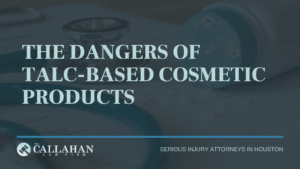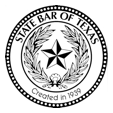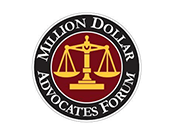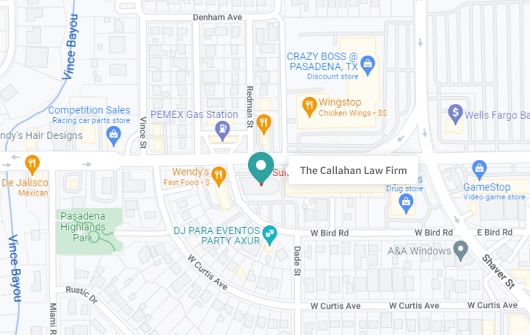The Dangers of Talc-Based Cosmetic Products

The information that every consumer must know.
What is it?
Considered the softest mineral known to man, Talc is a naturally occurring silicate found across the globe. The substance has been used for millennia for varying purposes, ranging from signets and cylinder seals by the Ancient Assyrians to cosmetics among Ancient Egyptians. Today, the mineral continues to be used in a wide range of goods, including pharmaceuticals, makeup, foods, organic agriculture, hygiene products, detergents, paint, ceramics and plastics, among many others.
Most people associate talc with talcum powder and, more commonly, with its namesake product: Baby Powder. Dating back to 1893, Johnson & Johnson began marketing the product for the prevention and treatment of babies’ diaper rashes. By the early 1900’s, the company expanded its marketing to include use in cosmetics and, most notably, for feminine hygiene needs. By the mid-20th century, Johnson & Johnson had introduced another product, Shower-to-Shower Baby Powder, marketing it directly to women for use after showering with the slogan of a “sprinkle a day to keep odors away.” The campaign was tremendously successful with its target market at the time, and it remains one of the most memorable marketing phrases in the company’s history.
Although Johnson & Johnson’s products have been the focus of many of the studies and most of the talc-related lawsuits, some non-Johnson & Johnson products have also been included in suits as well, including Colgate-Palmolive’s Cashmere Boutique and some talc-based products from Whittaker, Clark & Daniels.
The Dangers
The challenge in determining whether talc is dangerous lies in the purity of the mineral. Talc, in its natural state, is commonly found near asbestos, which is a known carcinogen. As a result, mining talc frequently leaves trace amounts of asbestos. Any discussion of the dangers of talcum powder, therefore, must begin with differentiating between asbestos-free talc and talc containing asbestiform fibres.
Defining Asbestos Free…
In 1976, the Cosmetic, Toiletry, and Fragrances Association (CTFA) issued voluntary guidelines directing that asbestos be up to 99.5% “non-detectable” in talc-based cosmetic products in the United States. Notably, the trade organization lobbied for a less stringent methodology than the Food and Drug Administration’s (FDA) standard of “asbestos-free,” which sought acceptable levels of chrysotile to be less than 0.01% and under 0.1% for amphibole asbestos. This distinction is significant; according to a 2019 publication on the subject, the difference in methodologies translates into potentially billions more dangerous asbestos fibers being released into the air.
Signs of Problems…
Although evidence of a potential link between talc and cancer existed in the 1930s, it was not until the early 1970s that studies began to suggest that the long-term use of talc-based baby powders on the female genitalia area could be correlated with an increased risk of ovarian cancer. In one of the early studies, a group of gynecologic oncologists found that 75% of the ovarian tumors they analyzed contained talc particles deeply embedded in them. A few years later, in 1976, a team of researchers at Mount Sinai Hospital found over 50% of samples of talcum powder products contained asbestos, with amounts ranging from 2%-20%.
Over the years, independent research studies have demonstrated numerous instances of the industry’s failure to meet even the lower standard of “non-detectable” levels of asbestos that it originally advocated. In 2017, for example, researchers reported finding asbestos in cosmetics, including in a popular line of children’s makeup sold by retailers Justice and Claire’s. Most recently, in late 2019, the U.S. Food and Drug Administration revealed findings of asbestos in Johnson & Johnson’s iconic Baby Powder. The revelation came less than two weeks after the company’s CEO stated that the company “unequivocally” believes its talc and baby powder does not contain asbestos. The CEO has since retracted the statement and recalled 33,000 bottles of the product.
Unfortunately, awareness of the dangers of the products does not reach a broad enough audience. A report published as recently as 2016 showed that over 60% of African American women with ovarian cancer had regularly used talcum powder on their genitalia.
Accountability for the Past, and Future Viability of the Products
Those who have suffered from the effects of talc-based products have been increasingly pursuing justice for their conditions by holding companies accountable through the courts. Advancing plaintiff’s cases gained strength after internal Johnson & Johnson documents were uncovered showing that, since at least 1971, the company knew that its products sometimes tested positive for small amounts of asbestos. Reuters, in an 2018 investigative article, further revealed an internal memo that showed company executives, mine managers, scientists, doctors and lawyers had been aware of the problem and had actively discussed managing the matter internally. Such efforts were made while the company aggressively sought to avoid disclosing information to regulators and / or consumers.
To be sure, Johnson & Johnson has had success defending some cases. In 2019, for example, over 60% of verdicts were in their favor. However, they are pyrrhic victories when considering that the company has been hit with over $5.4 billion in damages with only 6 of the highest profile cases in the last 5 years. There are over 17,000 suits pending, and Johnson & Johnson recognizes the extraordinary liability it has exposed itself to and has been working toward settling many other cases.
Given that Walmart, CVS and Rite Aid decided in 2019 to no longer sell talc-based baby powder and that Johnson & Johnson’s $76.5 billion 2017 revenue derived only $420 million from all talc-based products, the company’s decision to continue selling the products up until very recently is curious and its long-term commitment to consumer safety is doubtful. It is only as of May 19th, 2020, that Johnson & Johnson announced on its website that they are discontinuing talc-based baby powder products in the U.S. and Canada, stating that “existing inventory will continue to be sold until it runs out.”
Other Dangers
Although the headline danger for talcum powder has been on ovarian cancer, studies have demonstrated connections to other illnesses, such as pulmonary talcosis, fibrosis, granulomatosis and lung cancer, including mesothelioma. Babies are even more at risk for the pulmonary issues mentioned above, which is particularly troublesome given the product is marketed as Baby Powder.
How to Get Help
The emotional, physical, and financial toll of a cancer diagnosis is enormous. If you have been diagnosed with ovarian cancer or another form of cancer that you believe is the result of a talc-based product, it is imperative to speak with counsel about your rights. The product liability lawyers at The Callahan Law Firm have spent decades advocating for the rights of people who were harmed by common everyday products that were thought to be safe. We help people just like you fight for your rights and the compensation you need and deserve. Contact us at 713-224-9000 to see how our defective products lawyers can help you.
Contact The Callahan Law Firm For A Free Consultation

Michael S Callahan is an attorney and founder of The Callahan Law Firm. He focuses his practice on representing individuals and families in personal injury cases involving motor vehicle and truck accidents, workplace accidents and defective products. With over 25 years of experience, he is dedicated to fighting on behalf of people whose lives have been forever altered by the negligence and carelessness of corporations and individuals. Originally trained as a mechanical engineer, Michael has been practicing law and fighting for justice for those who need it most since 1994. He is board-certified in Personal Injury Trial Law by the Texas Board of Legal Specialization and a member of various esteemed legal associations. Outside of work, Michael enjoys spending quality time with his family, outdoor activities, and continually striving to improve as a trial lawyer and human being.











